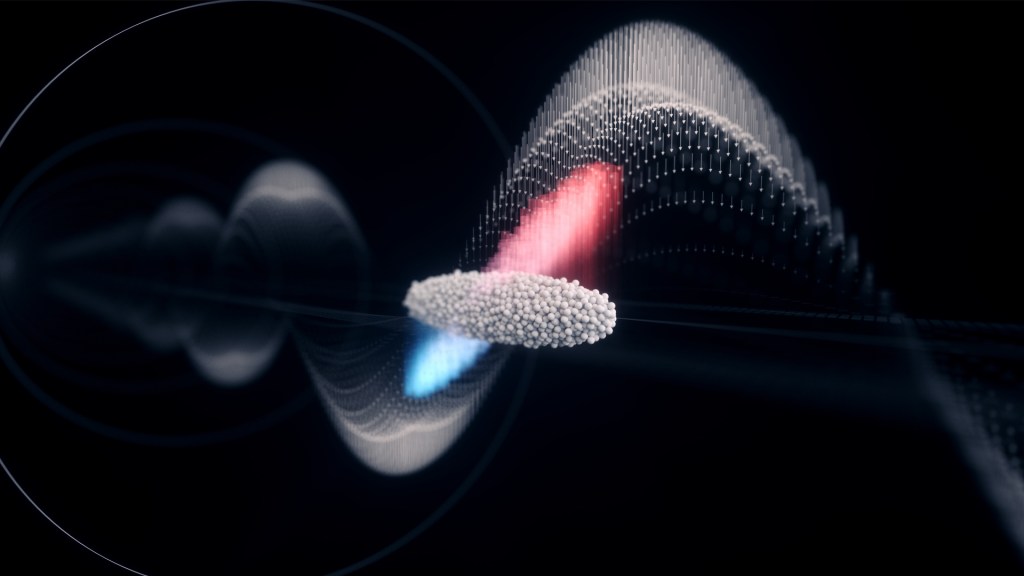When it comes to making groundbreaking discoveries in particle physics, scientists rely on large particle accelerators to conduct advanced experiments. These powerful machines use long tracks and magnets to push particles to high speeds.
However, such accelerators are massive and considerably expensive. To overcome these limitations, scientists have been working on laser plasma acceleration, an exciting technology that can result in the development of smaller, cheaper, and more accessible accelerators.
A laser-plasma accelerator is only a few centimeters in size, but can accelerate particles to very high speeds and energies needed for scientific experiments. In theory, it uses intense laser pulses and plasma waves instead of conventional magnets.
Now, a team of researchers from the German research facility Deutsches Elektronen-Synchrotron (DESY) have made significant progress in realizing the laser-plasma acceleration technology. In their latest study, scientists propose a new method to enhance the quality of electron beams produced by laser-plasma accelerators.
“Using a clever correction system, a research team was able to significantly improve the quality of electron bunches accelerated by a laser plasma accelerator. This brings the technology a step closer to concrete applications, such as a plasma-based injector for a synchrotron storage ring,” the study authors note.
A two-stage correction approach
Currently, there are two main challenges with laser plasma acceleration technology: beam uniformity and energy distribution.
These issues arise because not all the electron bunches (groups of electrons) accelerated by the plasma wave behave in the same way. Some gain more energy than others, leading to uneven and less predictable beams.
The study authors have found a way to fix these problems using a two-stage correction method. First, they send the uneven electron bunches from the LUX (Laser and X-ray free electron laser) accelerator through a special arrangement of four magnets called a chicane.
This chicane forces the electrons to take a detour, which stretches out the bunch in time and also separates them based on their energies. As a result, the faster, high-energy electrons end up at the front of the stretched-out bunch, and the slower, lower-energy ones end up at the back.
Next, this stretched and sorted bunch of electrons goes into a device (a resonator) similar to those used in regular particle accelerators. This device uses radio waves to either slow down or speed up the electrons.
“If you time the beam arrival carefully to the radio frequency, the low-energy electrons at the back of the bunch can be accelerated, and the high-energy electrons at the front can be decelerated. This compresses the energy distribution,” said Paul Winkler, lead author of the study.
The process ensures that the energy of all electrons in the bunch is more or less equal. Using this approach, the DESY team was able to make the energy differences within a bunch 18 times smaller and the overall energy of the bunches 72 times more consistent. These results made laser-plasma accelerated electron bunches almost as good as those produced by traditional, giant accelerators.
From theory to reality
The researchers at DESY are upbeat following their successful experiment which turned a theoretical idea into reality for the very first time. The two-stage correction method has never been experimentally demonstrated until now.
“What we have achieved is a big step forward for plasma accelerators. We still have a lot of development work to do, such as improving the lasers and achieving continuous operation, but in principle, we have shown that a plasma accelerator is suitable for this type of application,” noted Wim Leemans, one of the study authors.
The scientists understand how this technique could be used. They believe it might help create and speed up electron bunches that can be fed into powerful X-ray machines like PETRA III.
PETRA is a large scientific facility at DESY that uses fast-moving electrons to produce extremely bright X-rays. These X-rays help scientists examine various materials, molecules, and biological samples in great detail.
The study has been published in the journal Nature.
Read the full article here
